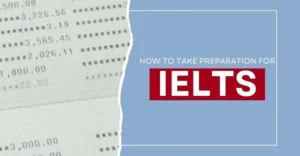IELTS Band and Score Details. The International English Language Testing System (IELTS) is a standardized test that assesses the language proficiency of non-native English speakers. In This Article we will discuss about IELTS band score and question pattern.
Table of Contents
The test is designed to measure the ability of candidates to use English in academic and professional settings, and it is recognized by more than 10,000 organizations worldwide, including universities, employers, and immigration authorities.
IELTS band and Section
The IELTS test consists of four sections: Listening, Reading, Writing, and Speaking. Each section is scored separately, and the scores are then combined to produce an overall band score.
The band scores range from 0 to 9, with a score of 9 indicating an expert level of English proficiency, and a score of 0 indicating that the candidate did not attempt the test.
IELTS band scores in more detail
Here is a breakdown of IELTS band score and what each means:
Band score 9 (Expert User): A band score of 9 indicates that the candidate has a fully operational command of the English language. They can use English fluently and accurately in all contexts, and they have a broad range of vocabulary and can express themselves with precision and clarity.
Band score 8 (Very Good User): A band score of 8 indicates that the candidate has a very good command of the English language. They can use English fluently and accurately in most contexts, and they have a wide range of vocabulary.
Band score 7 (Good User): A band score of 7 indicates that the candidate has a good command of the English language. They can use English fluently and accurately in many contexts, and they have a good range of vocabulary.
Band score 6 (Competent User): A band score of 6 indicates that the candidate has a competent command of the English language. They can use English effectively in familiar contexts, but may have difficulty in some unfamiliar situations.
Band score 5 (Modest User): A band score of 5 indicates that the candidate has a modest command of the English language. They can communicate in most situations, but may have difficulty in more complex contexts.
Band score 4 (Limited User): A band score of 4 indicates that the candidate has a limited command of the English language. They can understand basic communication, but may struggle to communicate themselves.
Band score 3 (Extremely Limited User): A band score of 3 indicates that the candidate has an extremely limited command of the English language. They can understand and communicate only in very basic situations.
Band score 2 (Intermittent User): A band score of 2 indicates that the candidate has an intermittent command of the English language. They can understand and communicate only in very familiar situations.
Band score 1 (Non-User): A band score of 1 indicates that the candidate has no ability to use the English language, except for a few isolated words.
IELTS Band score 0 (Did not attempt the test): A band score of 0 indicates that the candidate did not attempt the test.
In the IELTS test, the Listening, Reading, and Writing sections are scored on a scale of 0-9, while the Speaking section is scored on a scale of 0-9 in half-band increments (e.g., 6.5, 7.0, 7.5, etc.). The scores from each section are then averaged to produce an overall band score, which is also given on a scale of 0-9.
Here is a breakdown of the question
IELTS Band Details and score details for each section of the IELTS test:
Listening Section:
The Listening section consists of four sections, each with 10 questions. The total number of marks for the Listening section is 40, and the test is 30 minutes long.
Each question in the Listening section is worth one mark, and the score is based on the number of correct answers. The raw scores are then converted into a band score using a conversion table.
Reading Section:
The Reading section consists of three sections, and the total number of marks is 40. The test is 60 minutes long.
Each question in the Reading section is worth one mark, and the score is based on the number of correct answers. The raw scores are then converted into a band score using a conversion table.
Writing Section:
The Writing section consists of two tasks, and the total number of marks is 40. Task 1 is worth one-third of the total marks, while Task 2 is worth two-thirds of the total marks. The test is 60 minutes long.
Task 1 is assessed based on the candidate’s ability to describe and interpret graphical information. Task 2 is assessed based on the candidate’s ability to present a position, argument or opinion on a given topic.
Each task is scored on a scale of 0-9, and the scores are averaged to produce an overall band score for the Writing section.
Speaking Section:
The Speaking section consists of three parts, and the total number of marks is 40. The test is 11-14 minutes long.
Part 1 involves answering general questions about oneself and familiar topics, and is scored on a scale of 0-9. Part 2 involves speaking on a given topic for 2 minutes, and is scored on a scale of 0-9. Part 3 involves a discussion of abstract issues related to the topic in Part 2, and is also scored on a scale of 0-9.
The scores from all three parts are then averaged to produce an overall band score for the Speaking section.
Each section of the IELTS test is scored separately, and the scores are then combined to produce an overall band score.
In conclusion, the IELTS band scores provide a detailed evaluation of an individual’s English language proficiency. By understanding the band scores, candidates can identify their strengths and weaknesses, and work to improve their language skills accordingly.



